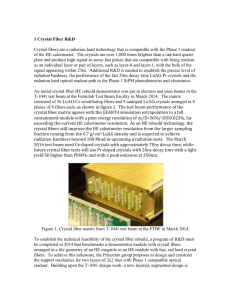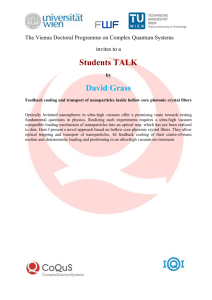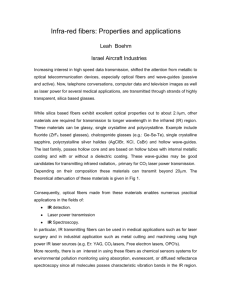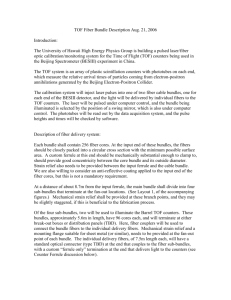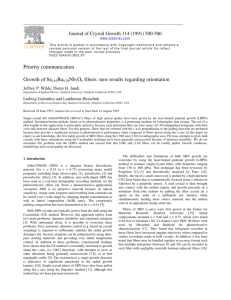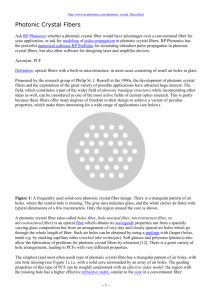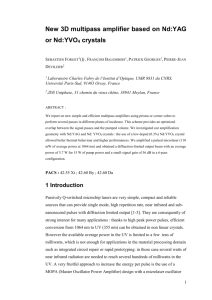NSF REU Site Renewal: Interfaces and Surfaces Summer 2015
advertisement
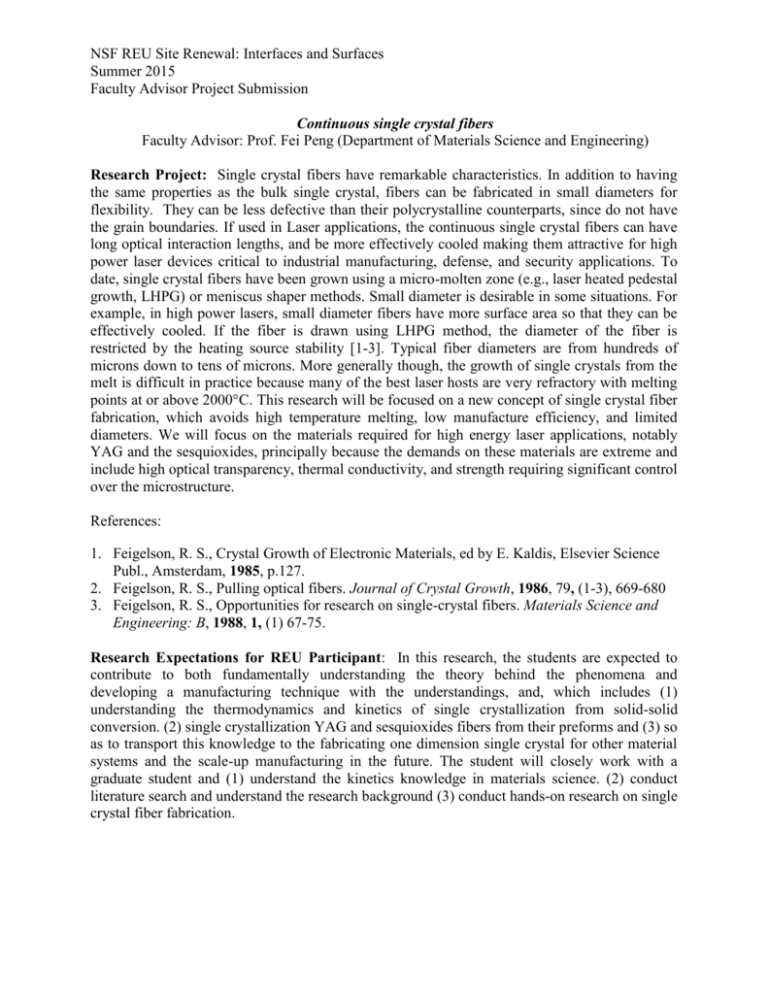
NSF REU Site Renewal: Interfaces and Surfaces Summer 2015 Faculty Advisor Project Submission Continuous single crystal fibers Faculty Advisor: Prof. Fei Peng (Department of Materials Science and Engineering) Research Project: Single crystal fibers have remarkable characteristics. In addition to having the same properties as the bulk single crystal, fibers can be fabricated in small diameters for flexibility. They can be less defective than their polycrystalline counterparts, since do not have the grain boundaries. If used in Laser applications, the continuous single crystal fibers can have long optical interaction lengths, and be more effectively cooled making them attractive for high power laser devices critical to industrial manufacturing, defense, and security applications. To date, single crystal fibers have been grown using a micro-molten zone (e.g., laser heated pedestal growth, LHPG) or meniscus shaper methods. Small diameter is desirable in some situations. For example, in high power lasers, small diameter fibers have more surface area so that they can be effectively cooled. If the fiber is drawn using LHPG method, the diameter of the fiber is restricted by the heating source stability [1-3]. Typical fiber diameters are from hundreds of microns down to tens of microns. More generally though, the growth of single crystals from the melt is difficult in practice because many of the best laser hosts are very refractory with melting points at or above 2000°C. This research will be focused on a new concept of single crystal fiber fabrication, which avoids high temperature melting, low manufacture efficiency, and limited diameters. We will focus on the materials required for high energy laser applications, notably YAG and the sesquioxides, principally because the demands on these materials are extreme and include high optical transparency, thermal conductivity, and strength requiring significant control over the microstructure. References: 1. Feigelson, R. S., Crystal Growth of Electronic Materials, ed by E. Kaldis, Elsevier Science Publ., Amsterdam, 1985, p.127. 2. Feigelson, R. S., Pulling optical fibers. Journal of Crystal Growth, 1986, 79, (1-3), 669-680 3. Feigelson, R. S., Opportunities for research on single-crystal fibers. Materials Science and Engineering: B, 1988, 1, (1) 67-75. Research Expectations for REU Participant: In this research, the students are expected to contribute to both fundamentally understanding the theory behind the phenomena and developing a manufacturing technique with the understandings, and, which includes (1) understanding the thermodynamics and kinetics of single crystallization from solid-solid conversion. (2) single crystallization YAG and sesquioxides fibers from their preforms and (3) so as to transport this knowledge to the fabricating one dimension single crystal for other material systems and the scale-up manufacturing in the future. The student will closely work with a graduate student and (1) understand the kinetics knowledge in materials science. (2) conduct literature search and understand the research background (3) conduct hands-on research on single crystal fiber fabrication.



